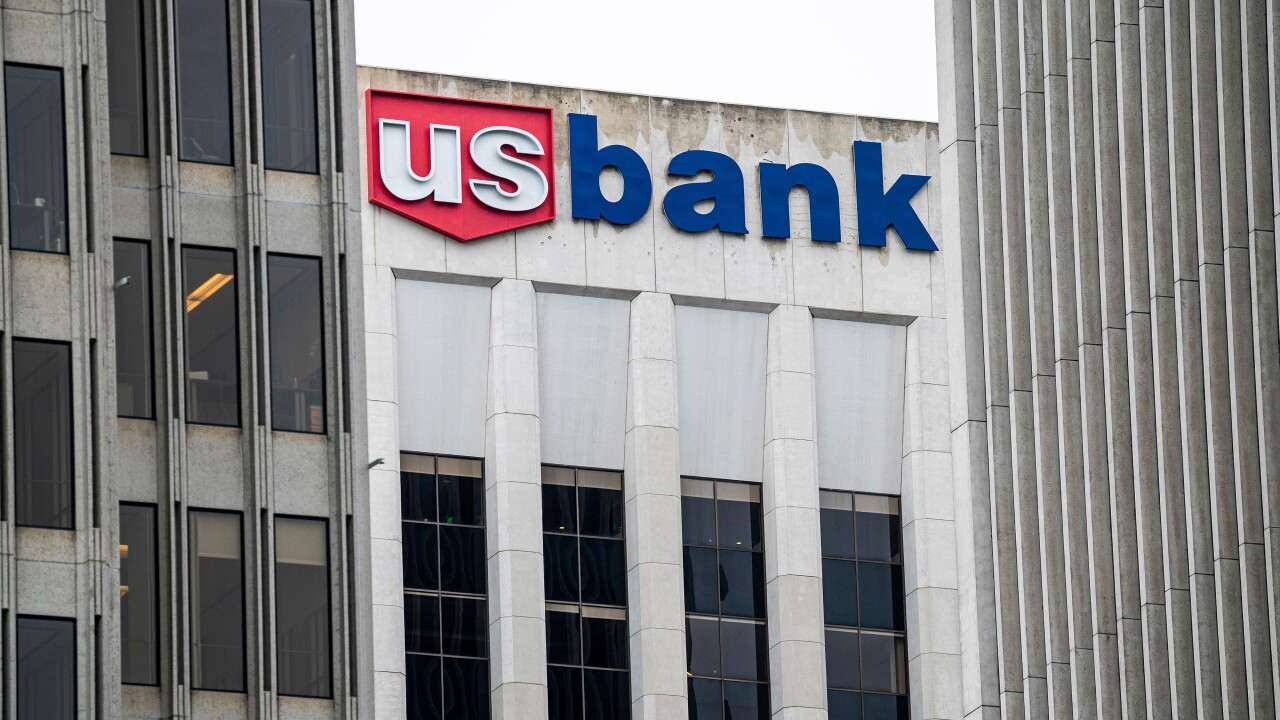A Ginnie Mae proposal to introduce a risk-based capital requirement for nonbanks has sparked an outcry from mortgage lenders that originate the vast majority of loans to first-time homebuyers and minorities.
Ginnie issued a
State and federal regulators have sought for years to impose prudential regulation and stress-testing on nonbank lenders but the new Ginnie plan is the first to include a risk-based capital standard.
Some experts suggested that the changes, if enacted, would force the sale of mortgage servicing rights and cause some lenders to stop originating loans that are guaranteed by the Federal Housing Administration and other government agencies.
“This is a huge deal, this is extraordinarily excessive and it will literally be a dagger in the back of the FHA program,” said former FHA Commissioner David Stevens, the CEO of Mountain Lake Consulting and a former president and CEO of the Mortgage Bankers Association.
The MBA called for more testing and transparency.

"The risk-based capital provisions are entirely new and untested and could adversely impact otherwise strong issuers," said Pete Mills, the MBA's senior vice president of residential policy. "Ginnie needs to back-test this through prior periods to demonstrate the impact before moving forward.”
Ginnie cited three specific risks in the mortgage market that prompted the need to add liquidity and capital charges: the increased size of the guaranteed portfolios, the changing profile of its lender base, and a greater systemic vulnerability to economic stress.
"Liquidity shocks have necessitated a more rigorous set of financial requirements than was in place during the" global financial crisis, Ginnie said in the request.
The proposal was announced by Gregory Keith, Ginnie’s senior vice president and chief risk officer, on July 9. The request is open for public comment for 30 days, or until Aug. 9. If approved, the plan would go into effect at year-end.
"This announcement underscores Ginnie Mae’s commitment to continuously assess its MBS Guide requirements with a goal of continuing to ensure Issuer success in our program while minimizing risk to the government’s unconditional guarantee,” Keith said in a press release.
Ginnie has never previously included a risk-based capital requirement for participants. The expanded net worth and liquidity requirements would apply to all Ginnie issuers, but the risk-based capital requirement would only apply to nonbanks, since banks already face prudential regulatory requirements.
While some experts said additional charges and fees are needed to cover a potential liquidity crisis, several mortgage experts said Ginnie should provide more data on how it came up with the risk weights.
Under the plan, certain low-risk assets such as cash would have a zero risk weight. Government loans would have a 20% weight, followed by a 50% weight for conforming loans.
But drawing the most attention, and the most criticism, is a proposed 250% risk weight for a firm's mortgage servicing portfolio, magnifying the effect of that portfolio on a company's capital benchmark.
“Ginnie needs to be thoughtful about the levels they are establishing,” said Ted Tozer, a former Ginnie Mae president who served during the Obama administration. “It’s not so much whether the rules are inappropriate but the levels they are putting on. If someone is hedging their servicing they should get credit because hedging takes out a lot of the volatility.”
Others questioned Ginnie's methodology, noting that no sources of data were provided in the request for input.
"How did they come up with a 250% risk-weighting? Who did the analysis?" said Stevens. "What’s the logic of this? What's behind the math and where is the transparency?"
The emphasis on mortgage servicing in the plan could draw particular disdain from the industry considering nonbanks' servicing dominance of loans in Ginnie pools. According to a June report released by Ginnie, 70% of the top 30 servicers of loans in those pools are nonbanks.
Ginnie policies are not subject to notice-and-comment rulemaking. Lenders and trade groups said they were upset that Ginnie did not give them a heads up about the policy change. It was released late on a Friday, a tactic often used by agencies seeking to bury bad news.
Ginnie is a government-owned for-profit company housed within the Department of Housing and Urban Development. Ginnie does not buy and sell loans but rather guarantees the timely payment of principal and interest to investors in mortgage-backed securities that are federally insured or guaranteed by four agencies: the FHA, the Department of Veterans Affairs, the U.S. Department of Agriculture Rural Development program and the Office of Public and Indian Housing.
Ginnie used to rely on prudential regulators like the Federal Deposit Insurance Corp. and the Office of the Comptroller of the Currency to conduct due diligence of banks, but there is no prudential regulator overseeing nonbanks.
The Federal Housing Finance Agency proposed heightened financial requirements for Fannie Mae and Freddie Mac seller-servicers
The Conference of State Bank Supervisors issued
Though FHFA has no authority over Ginnie, some experts suggest there should be coordination between the different overseers of the housing market.
“One of the big issues here is coordination between Ginnie and FHFA,” said Mills. “Parts of the framework are not all that different from what FHFA proposed last year to address concerns about putting up the same capital and liquidity to support FHA as you do for the" government-sponsored enterprises.
In the past few years, nonbank mortgage servicers have grown to control
Nonbanks also tend to be undercapitalized and experts suggest that imposing excessive charges for holding mortgage servicing rights could force some to abandon Ginnie. If that happened, it would mean fewer lenders would be originating FHA and other agency loans to first-time homebuyers and minority borrowers.
“Ginnie Mae should carefully assess the potential impact this risk-based capital requirement is reasonably likely to have on the appetite of independent mortgage bankers to create, acquire and hold Ginnie Mae mortgage servicing rights,” said Larry Platt, a partner at Mayer Brown. “Nonbank servicers will need significant other assets so that their net worth — to offset the adverse risk weighting given to mortgage servicing rights — satisfies the requisite risk-based capital ratio.”
The Ginnie proposal also comes as Biden administration officials are settling into new jobs at the FHFA, the FHA and HUD.
A Ginnie spokesman would not confirm whether HUD Secretary Marcia Fudge was aware of the request for input. Fudge
Last month, Sandra Thompson
Meanwhile, Ginnie Mae has been without a president for
In addition to the risk-based capital requirements, Ginnie has proposed additional net worth and liquidity requirements to take into account other obligations that issuers have, since many lenders also sell loans to Fannie and Freddie.
Ginnie wants to add a fee equal to 25 basis points of an issuer’s outstanding obligations to Fannie and Freddie. Ginnie issuers currently must hold $2.5 million in capital plus 35 basis points of their outstanding single-family Ginnie obligations.
Ginnie also said that its current liquidity requirements do not address the interest rate risk of loans in a lender’s origination pipeline or liquidity demands from sources other than Ginnie. It has proposed adding 5 basis points to outstanding obligations that lenders have to Fannie and Freddie, and 20 basis points for loans held for sale.
"While Ginnie may be trying to protect itself against the volatility of the asset class across business cycles and the differences in valuations across issuers, the implementation of a risk-based capital ratio framework should be gradual, developed in coordination with industry, and well calibrated to prevent affecting the very MSR values with which Ginnie Mae is concerned," said Angel Hernandez, vice president of capital markets at the Housing Policy Council and a former Ginnie director and manager of policy and strategic planning.
Platt went further, suggesting that Ginnie is shooting itself in the foot because the proposal, if enacted, would likely result in fewer loans being put into Ginnie securities and could lead to a drop in access to credit overall.
“It’s this odd form of self-hatred,” said Platt. “I understand that they want to have strong issuers but it basically says that anybody that wants our assets is not somebody they want in their program. It’s like Ginnie Mae saying they don’t want an issuer that wants to hold their assets. It just doesn’t seem thought through.”





